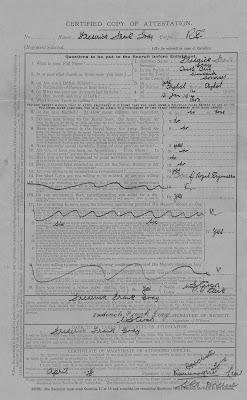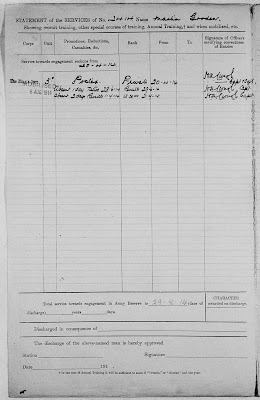This four-page form was in common usage in Her Majesty's Army and this particular example dates to 1896. It would ultimately be replaced by Army Form B.179a which would be more gently titled, Medical report on a soldier... This document was one of the standard forms which was to be included in a file of discharge documents and is one of the few files which does not seem to have been routinely weeded by the War Office / Ministry of Pensions or MoD. They obiously recognised its imporatnce as a historical summary of service and for today's military or family historian it is no less important.
The opening page, above, gives a good general summary of service, which in this example amounts to 16 years service at home, in Gibraltar and in Egypt. Date of enlistment, date of form-filling and age of the soldier are all present making this a very useful document indeed.
The pages which follow detail the nature of the disabilty, the degree to which it affects the individual and, finally, the opinion of the Medical Board. Questions throughout the document examine the character of the man. What are his havits like? Has he been a defaulter? Has the disability been "aggravated by intemperance, vice or misconduct?" Given the fondmness of alcohol by the British soldiery in general, it was hardly an unreasonable question to ask.
In this particualr case, theman in question was a staff sergeant whose habits and conduct were rated as "Regular, Very Good, Temperate" and his tubercle of the lung was not adjudged to have been as a result of his own imprudence.
It's a shame that this form does not a give a permanert address for the soldier, simply a hospital or station transferred to for further disposal. In this case, the man was sent to the Herbert Hospital in Woolwich which, 120 years later has been converted into flats called the Royal Herbert Pavilions. Sales prices today are in excexx of £400,000.
Images reprodiced here are Crown Copyright, The National Archives.






















